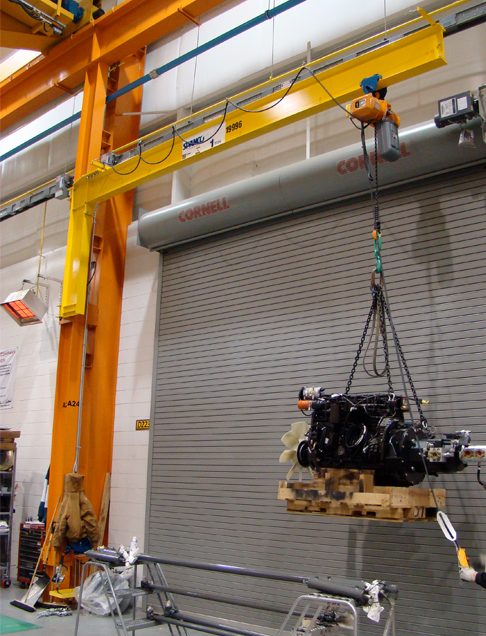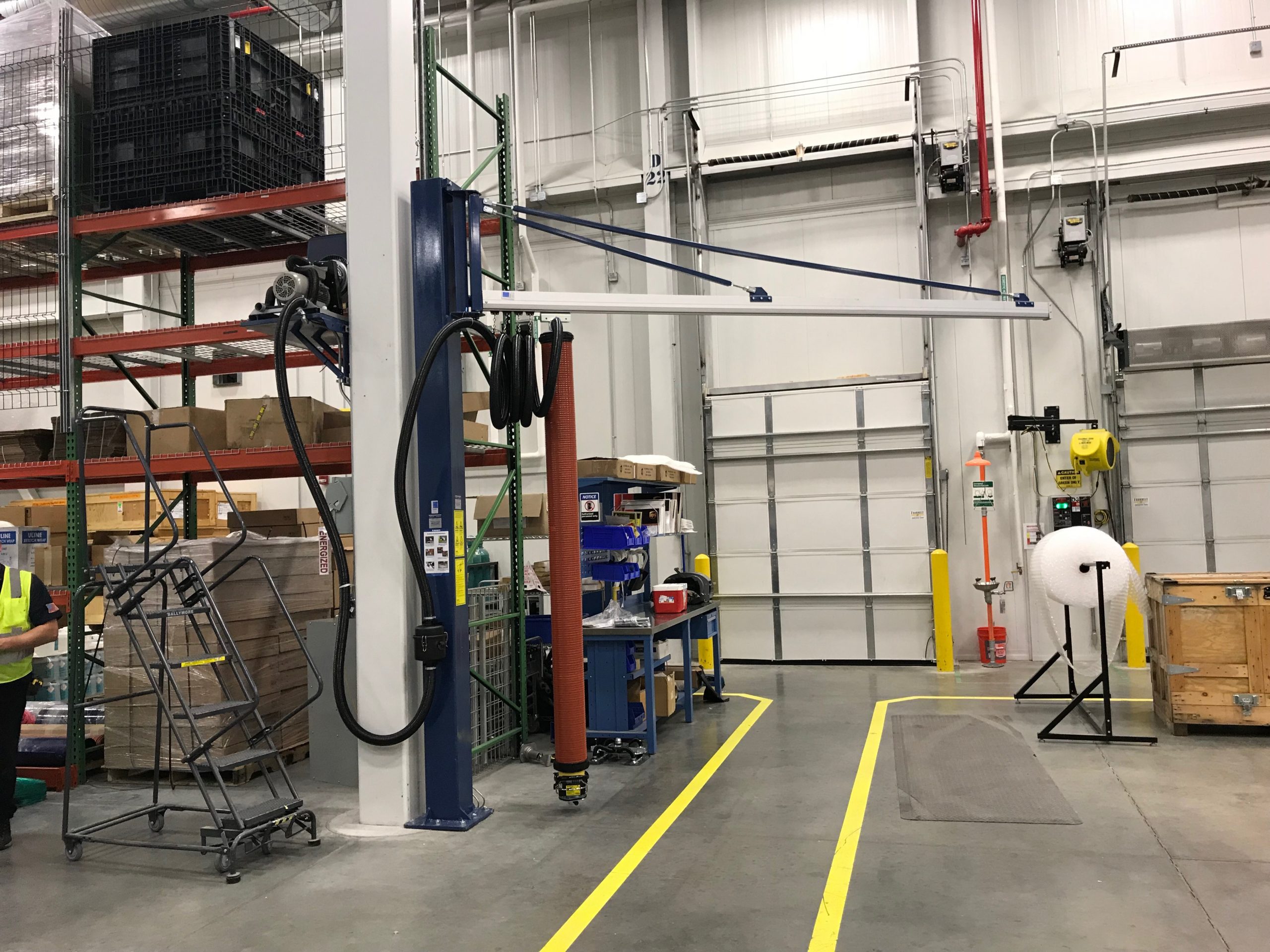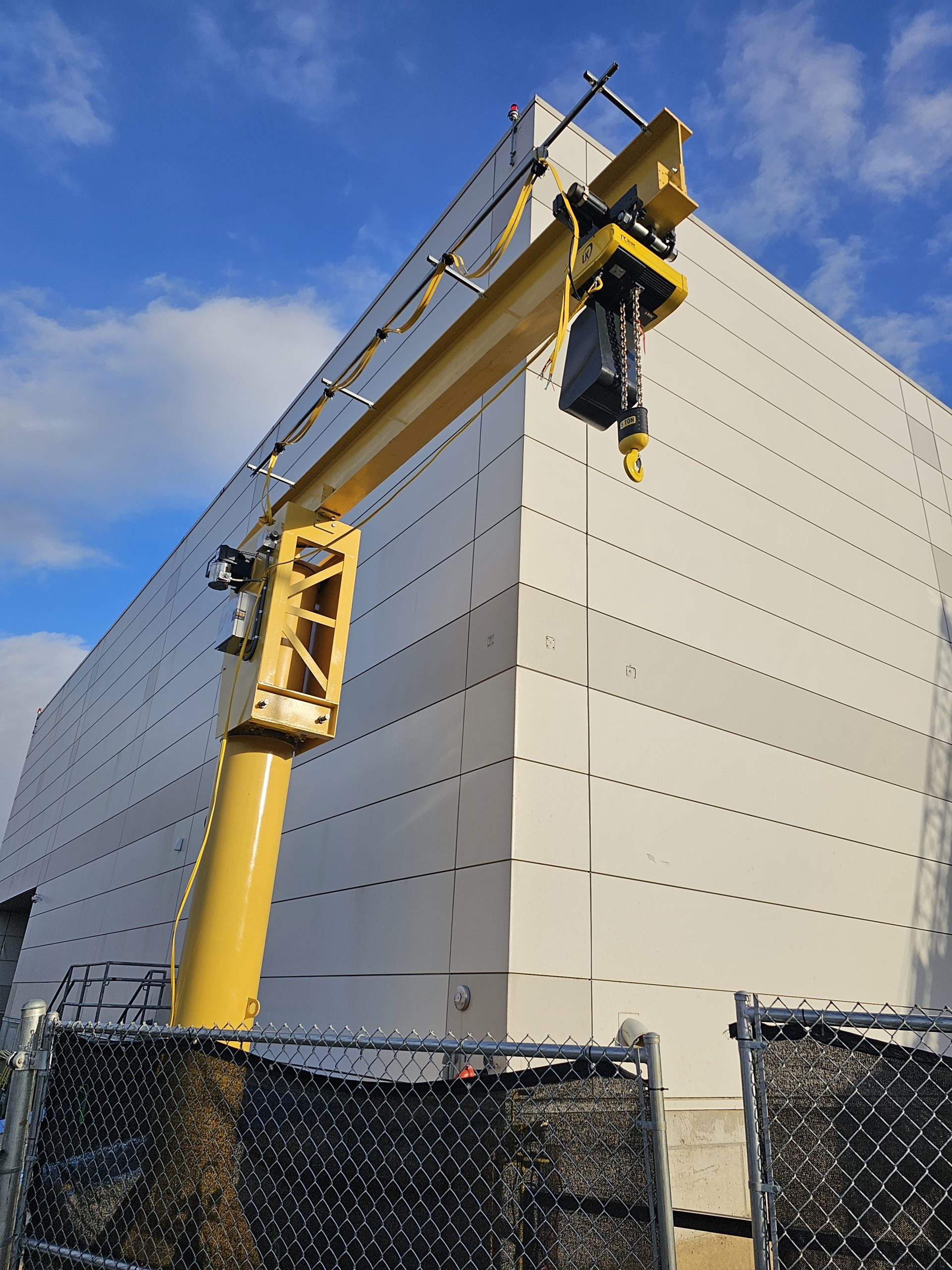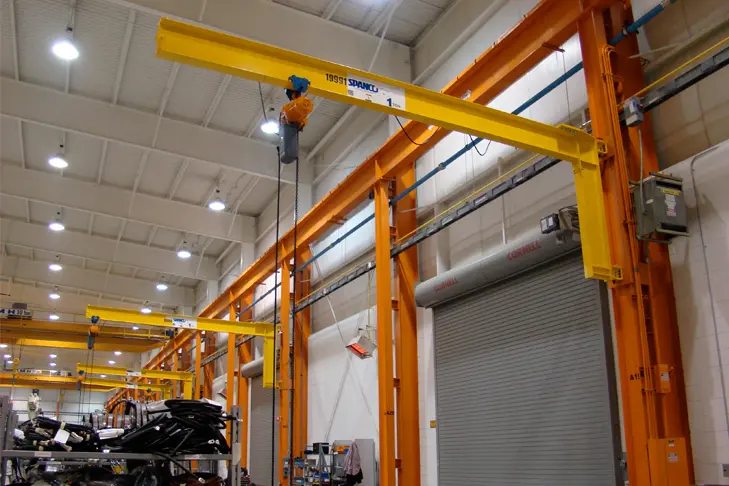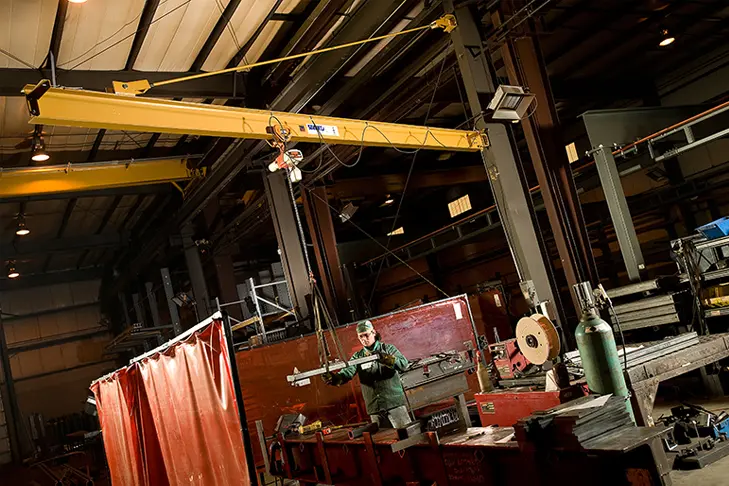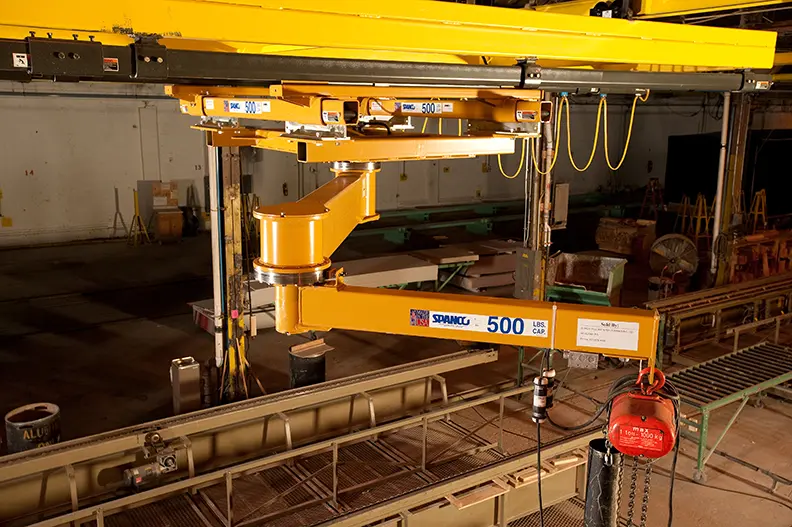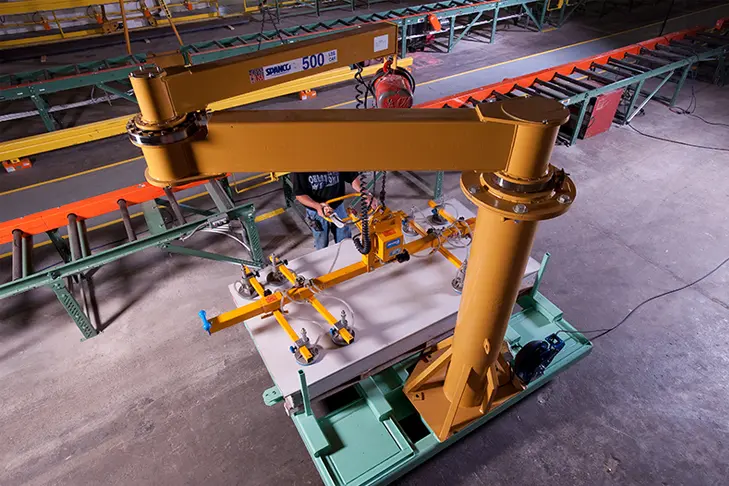What is a Jib Crane?
A jib crane consists of a wall-mounted or floor-mounted mast with a horizontal boom called a jib, which supports a movable hoist. Jib cranes can be stationary, or capable of moving 180 or 360 degrees to perform repetitive lifting or load transfer tasks.
Key Features
Versatile
Operate within a 180-degree or 360-degree space around their support base.
Efficient Material Transfer
Facilitate seamless transfer between workstations, enhancing efficiency.
Enhanced Safety
Offer a safer alternative to manual lifting, reducing the risk of injuries and strains.
High Load Capacity
Capable of supporting loads up to 30,000 lbs, depending on span and model.
Jib Crane Options
Floor-Mounted Jib Cranes
Floor-mounted jib cranes can be installed almost anywhere on the facility floor, even outside the facility should there be an outdoor need. They offer higher capacities, longer spans, and 360° rotation in a large circular area. These cranes are bolted to the facility floor giving free range and stability to the existing overhead support structure.
Wall-Mounted Jib Cranes
Wall-mounted jib cranes provide a 200° rotation over a circular cover area. Wall-mounted jib cranes require no extra floor space and no foundation they quickly fold out of the way of large overhead cranes and other obstacles perfect for the crowded facility watch multipolar systems already in place
Articulating Jib Cranes
Articulating jib cranes are different from traditional jib cranes by having a pivot point. This pivot allows the user to position loads in places traditional jibs can’t reach. For example, articulating jib cranes can reach around obstructions, walls, columns, through doorways, or into small spaces. These cranes also have multiple mounting orientations, including floor-mounted, wall-mounted, ceiling-mounted, and bridge-mounted. Its unique design provides 2 separate arms for maximum coverage!

